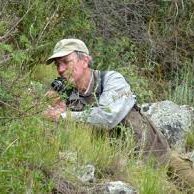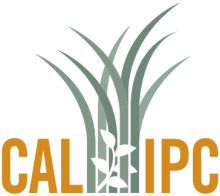Climate Matching Map
| Attachment | Size |
|---|---|
| ClimateMatch_CA_Senecio_angustifolius.pdf (1.09 MB) | 1.09 MB |
1. Question 1
The species has established in agricultural rooibos tea (Aspalathus linearis) plantations in South Africa slightly North and West of its native range. Although possibly only an agricultural weed here, I am including these South African occurrences as "where it is not native". (Senecio angustifolius as the major source . . .)
iNaturalist shows no occurrences outside of South Africa, other than those in California. (iNaturalist)
Outside of its native range in South Africa, there dubious records from Mexico, Germany, Spain and Taiwan, which are all considered to be in error and are ignored in this assessment. For a discussion of these, please see the "Notes" at the end of this assessment
Other than California and in tea plantations outside its native South African range (and unlikely in Mexico, Germany, Spain or Taiwan), I could find no other documentation of the species naturalizing.
The species is referenced as a common "weed" in tea plantations adjacent to but outside its native South African range. (Senecio a. - rooibos tea)
2. Question 2
Outside of its native range in South Africa, occurrences on GBIF from Mexico, Germany, Spain and Taiwan are all likely in error and omitted. See the "Notes" section for further discussion.
The species has established in agricultural tea plantations in South Africa slightly North and West of its native range. Although possibly only an agricultural weed here, I am including these South African occurrences as "naturalized in a similar climate". (Senecio a. - rooibos tea)
iNaturalist shows no occurrences outside of South Africa, other than those in California. (iNaturalist)
Other than California and in tea plantations outside its native South African range, I could find no documentation of the species naturalizing. However, the species is referenced as a common "weed" in tea plantations outside but adjacent to its native South African range.
A Climate Match SHOULD include plants that have naturalized, even in a horticultural or agricultural environment (although not necessarily invasive). Because of it being naturalized outside of its native range in South Africa, this question must be answered as a "YES".
3. Question 3
It has certainly naturalized there and it's footprint is expanding. However, it's environmental impacts at USMC Pendleton are not yet likely understood or quantified since it has only been on the site for perhaps little over a decade.
The species has established in agricultural tea plantations in South Africa slightly North and West of its native range. Although possibly only an agricultural weed here, I am including these South African occurrences as "being invasive". (Senecio a. - rooibos tea)
Outside of its native range in South Africa, occurrences on GBIF from Mexico, Germany, Spain and Taiwan are all likely in error and omitted. See the "Notes" section for further discussion. (GBIF) (Forest Science) (SEINet)
iNaturalist shows no occurrences outside of South Africa, other than those in California. (iNaturalist)
Other than California and in tea plantations outside its native South African range (and likely misidentifications in Mexico), I could find no documentation of the species naturalizing. However, the species is referenced as a common "weed" in tea plantations adjacent to its native South African range.
In summary, "Invasiveness", as defined by PRE, is not thoroughly established here, at least not yet. Based on the PRE definition of "invasive", this question must be answered as a "NO".
4. Question 4
The species has established in agricultural tea plantations in South Africa slightly North and West of its native range, but within a California climate match. Although possibly only an agricultural weed here, these occurrences are interesting but "invasiveness" is not necessarily certain. This is an agricultural weed in an irrigated environment. The plants ability to move outside of this environment is not established. I am not including these South African occurrences as "being invasive . . . in a similar climate". (Senecio a. - rooibos tea)
Occurrences in Mexico, Germany, Spain and Taiwan are all considered erroneous (see Notes for further discussion). (GBIF)
iNaturalist shows no occurrences outside of South Africa, other than those in California. (iNaturalist)
In summary, "Invasiveness", as defined by PRE, is not thoroughly established here, at least not yet. Secondly, a Climate Match should probably NOT include plants in a horticultural or agricultural environment. In irrigated agricultural situations, we should be pretty strict with the climate match. Based on the definition of invasive and discounting agricultural weed occurrences, this question must be answered as a "NO".
5. Question 5
6. Question 6
I am also including occurrences where it is documented as a weed in agricultural tea plantations in South Africa slightly North and West of its native range. Although possibly only an agricultural weed here, these occurrences are included. (Senecio a. - rooibos tea)
7. Question 7
The plant is variably described as:
"Erect or straggling, slender-stemmed shrublet, up to 500 mm tall". (Senecio angustifolius Thunb. in ref.)
"Twiggy, glabrous shrublet to 60 cm." (Senecio angustifolius Thunb. in ref.)
"Perennial herb to shrub, up to 1 m tall, 2 m wide, at maturity woody at base" (Simpson, M.S.)
Given the size and habit of the plant it would be reasonably significant in mass when compared to other species within its chosen plant community, thus displacing, shading and interrupting an equivalent amount of native vegetation. However, without more published evidence I am remaining conservative and assigning a No answer.
8. Question 8
The stature of this plant is described as up to 1 m high and 1-2 m wide at maturity and as an "Erect or straggling, slender-stemmed shrublet" (Senecio angustifolius Thunb. in ref.), "Twiggy, glabrous shrublet" (Senecio angustifolius Thunb. in ref.), or
"Perennial herb to shrub . . . at maturity woody at base" (Simpson, M.).
Images on Calflora (Calflora 2022) indicate that although the leaves of the shrub are small to very small, the accumulated dead branches could create some fuels. Since this plant is currently growing in areas with ample fuels, it does not change the fire regime.
9. Question 9
"Further investigation revealed an explanation for the presence of PAs (pyrrolizidine alkaloids) in rooibos plants, namely that it can be absorbed from the soil where rooibos plants co-occur with Senecio plants. Soil collected at the roots of Senecio species contained relatively high levels of senecionine and senecionine N-oxide. This preliminary study of carefully collected soil samples showed that soil can be contaminated with PAs and that this offers the only plausible explanation for the presence of PAs in rooibos tea plants."
The same South African paper states the following about toxins found in this species:
"Pyrrolizidine alkaloids (PAs) and their N-oxides (PANOs) are amongst the most widely distributed natural toxins produced by plants and are known to be hepatotoxic to humans and animals (Bull et al., 1968, Mattocks, 1986)." The striking part of that paper was the german BfR, similar to our FDA or EPA, found these toxic alkaloids in rooibos tea products across the nation, and the paper's authors tracked down the source, which is this weed.
Lastly, the same paper later offers this about livestock:
". . . the plant causes chronic PA (pyrrolizidine alkaloid) poisoning in livestock . . .". (Senecio a. - rooibos tea)
However, the tea contamination may be site specific and species specific and does not necessarily confirm this would occur with other plant species or in natural areas. Nonetheless, the commente re livestock poisoning is with merit. Based on the livestock poisoning reference and the pyrrolizidine alkaloid documentation I am answering YES, with a HIGH confidence.
10. Question 10
"Erect or straggling, slender-stemmed shrublet, up to 500 mm tall". (Senecio angustifolius Thunb. in ref.)
"Twiggy, glabrous shrublet to 60 cm." (Senecio angustifolius Thunb. in ref.)
"Erect or straggling, slender-stemmed shrublet, up to 500 mm tall." (Plants of the Greater Cape)
"Perennial herb to shrub, up to 1 m tall, 2 m wide, at maturity woody at base" (Simpson, M.S.)
These characters are inconclusive re its fire ecology. In observation and from limited comments in California collections it appears to become a naturalized component of the pre-existing plant community. None of the Calflora or CCH records indicate dense, thick or impenetrable stands (Calflora & CCH2). The comments that are included state "uncommon" and "rare", which would not imply thickets. Without more references, I am giving a "No" and a low confidence score.
In the rooibos tea paper (Senecio angustifolius Thunb.) some of the farms are described as "heavily infested." While this may be because of soil disturbance at the tea farms, it is possible we could see this type of dense infestations in California.
11. Question 11
12. Question 12
13. Question 13
Seeds were abundant on a plant examined in Orange County (8,200 potential seeds). It would be assumed that with such high seed production that a good number would be viable. (Observation of Senecio angustifolius – Calflora)
14. Question 14
Limited other documentation about seed production. However, the very long flowering and seeding period, being year-round or nearly so (CCH2 and Calflora), abundance of flower heads (Simpson et al and Observation of Senecio angustifolius – Calflora.) would indicate well over >1,000 achenes per year per plant.
Other shrubby Senecio species (S. jacobaea) have high seed viability rates, and its likely this species also has similar high viability rates, producing over 1,000 viable seeds per year. Viability in a study of shrubby Senecio jacobaea was typically from 20-70%. Seed viability was fairly long, at 6 years viability was still >5% in many soil samples. The time for seed viability to decline to 1% was estimated to be at least 4-5 years in the 0-2 cm surface layer and 10-16 years below 4 cm soil depth. (Thompson, A)
15. Question 15
However, these papers which are for different Senecio shrubby and similar species (S. jacobaea) and each show high germination of seeds, greater than 25% after one year. It is speculative that this species may also has have high germination as well, but it is reasonable. (Thompson, A) (Anonymous)
Without specific documentation of this species answering Yes, but with Low confidence.
16. Question 16
Another Calflora record documents abundant seed in a two to three year old plant. (Observation of Senecio angustifolius – Calflora)
This offers good information and warrants a "yes" answer for a woody plant, with a "high" confidence.
17. Question 17
"It germinates and grows throughout the year (unlike most other weeds, which are highly seasonal), and is therefore more difficult to control". (Senecio a. as a source . . .)
Flowering "all months" in CA (Simpson et al)
Calflora lists a flowering period of April through November, which would imply well over three months of seed production. (Calflora)
CCH records list flowering between the months of April and Nov., also implying well over three months of seed production. (CCH2)
18. Question 18
Further, its pattern of occurrence in California seems as likely or likelier to come from animal-mediated or human dispersal. In California, it is present in dry canyons that are animal (and human) corridors as well as areas where wind or water could disperse them. These modes of dispersal are all inference but potential. It's mode of transport in Southern CA in fairly widely scattered populations, some separated by 35 km (CCH2 Portal), is a bit mysterious.
19. Question 19
The achenes of the species are attached to a long pappus as seen in photographs (Calflora). However, the pappus does not appear to be feathery or plumose, which would make wind dispersal limited over long distances. The similar species, S. jacobaea, which has a similar pappus does not disperse seeds beyond 20 m. (McEvoy, P.B.)
Likely water dispersal as pappus and seeds should be able to float, a trait of S. jacobaea dispersal. (McEvoy, P.B.)
Answering yes, based upon likelihood of water dispersal and likely at least short distance wind dispersal.
20. Question 20
In California the known populations are rather widely scattered, with San Diego populations separated from Orange County populations by 20 miles. Within the San Diego occurrences, populations are as much as 5-10 miles separated, and in Orange County they are separated by 2 miles. (CCH2)
The question asks if long-distance dispersal is "frequent", which it does not seem to be, it is certainly happening, and quite possibly via people, clothes or footwear. How the plant moved from its native South Africa to USMC Camp Pendleton is possible via equipment, vehicles or clothing. However, this is speculative and warrants the Low confidence scoring.
Evaluation Notes
These is a scarcity of published date about this species natural history or invasiveness, making several of these questions either unanswered or with a low confidence score. Outside of its native South Africa, California appears to be the only location the species has naturalized, making us perhaps an early indicator for other similar climate areas of the world.
Briefly mentioned in Questions 1, 2, 3, and 4 are what I am considering dubious occurrence records in Mexico, Germany, Spain, and Taiwan:
Outside of its native range in South Africa, there are eight georeferenced occurences on GBIF from Mexico. Each of these are +- in the central or the Northern Central portion of the country, outside of any climate match to California. Two of the occurrences indicate "abundant" (at two different locales) and "dominant" at the same site and date (1990). Another collection (1973) many miles away also indicates "dominant". One other unrelated occurrence indicates "scarce". Others have no abundance information. (GBIF)
A very brief mention of Senecio angustifolius in Mexico is in a research paper discussing a co-occuring plant. It is mentioned as a component of the "shrub stratum" in an area about 125km NE of Mexico City (in a non-climate matched area). (Forest Science)
However, all of these Mexican occurrences are suspect. Based on date, institution, and location, collections by Tlapa Almonte appear to be a match to locality for Senecio cinerarioides collections on SEINet on that date. The collection by Rodriguez from 1986 also appears to match another specimen identified as S. cinerarioides on SEINet. I suspect at least some or all of these collections were, or will be later redetermined as S. cinerarioides, not angustifolius. (SEINet)
Two occurences in Germany are without any abundance information or details and are inconclusive.
A single very old record (1890) from Spain and a 1932 record from Taiwan are also inconclusive, with no additional information. The former could refer to a different species. (GBIF)







